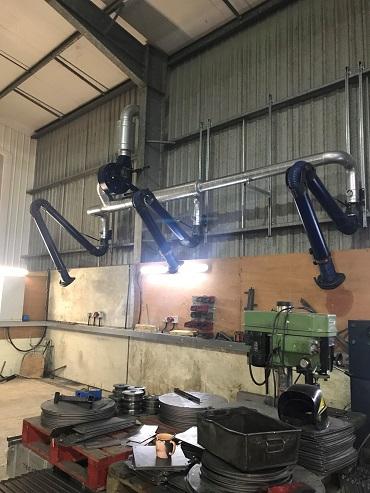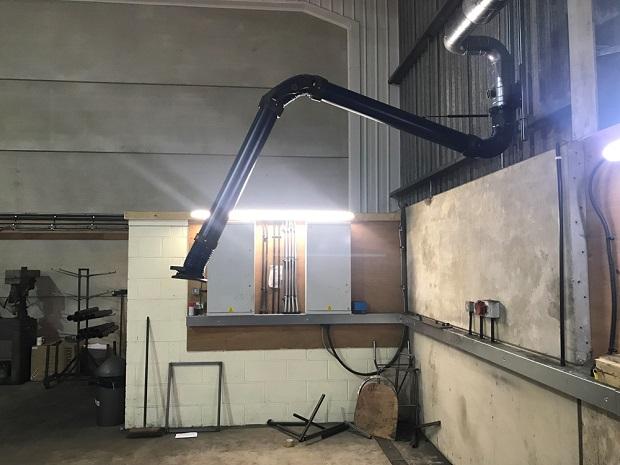In the warehouse’s dynamic and often bustling environment, numerous potential hazards can pose risks to employees. To mitigate these risks and create a secure working environment, it is imperative to implement a comprehensive set of measures and protocols. This article explores a range of solutions that can help warehouse managers safeguard their workforce and ensure that a culture of safety prevails in their operations.
 What are the common warehouse risks?
What are the common warehouse risks?
Warehouses, being hectic places, are exposed to many risks. Slip, trip, and fall incidents are the most frequent issues. A simple and common scenario considered worrisome is a floor that’s just been cleaned, a few scattered boxes, and a hurried worker. This everyday occurrence is a recipe for accidents.
Of course, some places and machines are more dangerous than others. Take, for instance, forklifts. They’re the workhorses of the warehouse but can be deadly if not operated properly. Forklift accidents, like collisions, tip-overs and even run-ins with pedestrians, are sadly frequent.
There’s also the risk of items falling off shelves or racks. Something that isn’t securely stored or manipulated can tumble down and cause injury.
The risk of physical harm associated with manual handling is also high. Warehouses have an army of workers lifting heavy objects day in and day out. Without the proper technique or equipment, muscle injuries are likely to occur.
Moreover, these facilities often store flammable materials. If they’re not protected, there is a severe fire risk.
Machinery accidents are a concern, too. Conveyor belts, pallet jacks, and other equipment can be hazardous if not well-maintained or operated carefully. Furthermore, racking systems can collapse if overloaded or not adequately looked after.
Chemical exposure is another issue. Warehouses might stock hazardous chemicals, and if they’re not handled and stored correctly, it could lead to massive accidents.
 It’s also important to remember that ventilation might not seem like a big deal, but poor air quality can lead to respiratory problems, especially when dust, fumes, or pollutants are present.
It’s also important to remember that ventilation might not seem like a big deal, but poor air quality can lead to respiratory problems, especially when dust, fumes, or pollutants are present.
 Training is another matter. Employees poorly oriented on safety procedures, equipment operation, and what to do in emergencies might be risks themselves. Long hours and demanding workloads can contribute to fatigue and stress, which, in turn, increase the likelihood of accidents.
Training is another matter. Employees poorly oriented on safety procedures, equipment operation, and what to do in emergencies might be risks themselves. Long hours and demanding workloads can contribute to fatigue and stress, which, in turn, increase the likelihood of accidents.
 How to improve safety in your warehouse
How to improve safety in your warehouse
Certain solutions have universal applicability, such as providing thorough staff training, while others warrant a more nuanced, case-specific assessment.
- Attire for safety: Protection begins with proper attire. Employees should be equipped with suitable clothing and Personal Protective Equipment (PPE). This includes high-visibility vests, safety helmets, steel-toed boots, and non-slip footwear to ensure stability and minimise slip hazards.
- Knowledge empowers: Consistent training acts as a protective barrier against accidents. Warehouse personnel should be well-versed in equipment handling techniques and safe stacking practices to avert potential risks. Continuous training is imperative to maintain a vigilant workforce.
- Machine maintenance: Just like automobiles, machinery requires regular attention and care. Rigorous inspection and servicing of equipment such as conveyor systems are essential. Neglecting maintenance can lead to hazardous situations, particularly with heavy devices like forklifts.
- Air quality control: Commercial buildings can accumulate dust and particulate matter. To sustain clean and breathable air, deploying Local Exhaust Ventilation (LEV) systems is crucial. These technologies effectively remove dust, preserving a healthy work environment.
- Visual aids as a lifeline: The significance of clear and conspicuous signage cannot be overstated. Safety signs function as navigational instruments, highlighting potential risks, guiding safe pathways, and reinforcing adherence to protection protocols.
- Audits for safety assurance: Implementing regular safety audits mirrors a medical check-up. They facilitate the early identification of potential hazards, allowing for preventive measures before accidents occur.
- Organised workspace: Maintaining a tidy and systematically arranged workspace may seem commonplace, but it is invaluable. Disorderly spaces invite accidents and impede safety. Therefore, storing items appropriately and ensuring unobstructed walkways are essential measures.
- Enhance vigilance: Employ advanced monitoring systems such as CCTV cameras and sensors strategically placed throughout the facility. This heightened vigilance allows for real-time tracking of activities and early detection of unusual or hazardous situations, enabling timely intervention and prevention of undesirable events.
By diligently following these pragmatic guidelines, warehouses can significantly elevate safety standards, fostering an environment where accidents are rare exceptions. It’s imperative to recognise that safety is a collective responsibility, and each team member plays a vital role in creating a secure working atmosphere.





Comments are closed.